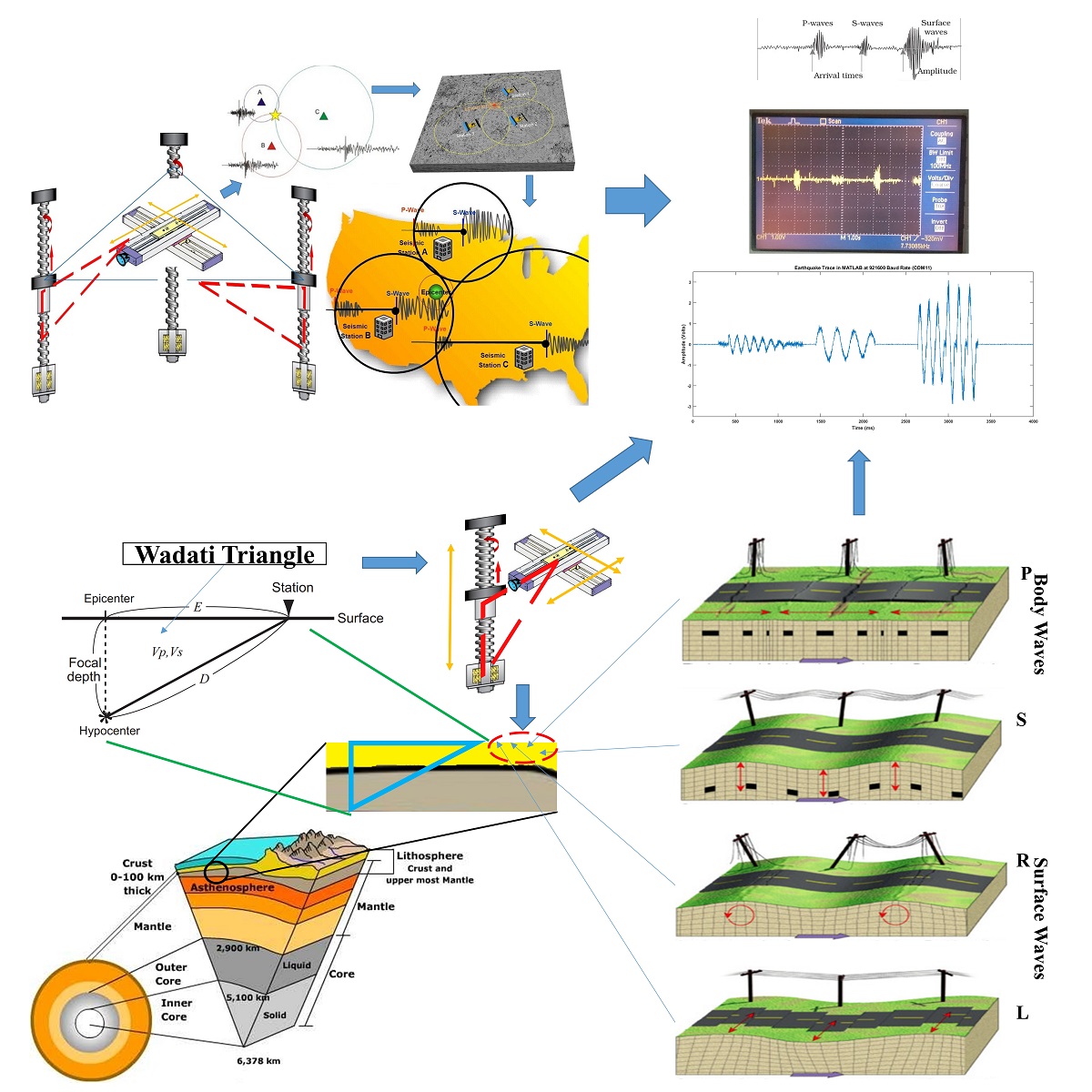Natural calamities observation, study and simulation has always been a prime concern for disaster management agencies. Billions of dollars are spent annually to explore geo-seismic movements especially earthquakes but it has always been a unique accident. The real-time study of seismic waves, ground motions, and earthquakes always needed a programmable mechanical structure capable of physically producing the identical geo-seismic motions with seismology domain definitions. A programmable multi-parametric five degrees of freedom electromechanical seismic wave events simulation platform to study and experiment seismic waves and earthquakes realization in the form of geo-mechanic ground motions is exhibited in this work. The proposed platform was programmed and interfaced through an IoT cloud-based Web application. The geo-mechanics was tested in the range of i) frequencies of extreme seismic waves from 0.1Hz to 178Hz; ii) terrestrial inclinations from -10.000° to 10.000°; iii) velocities of 1km/s to 25km/s iv) variable arrival times 1us to 3000ms; v) magnitudes M1.0 to M10.0 earthquake; vi) epi-central and hypo-central distances of 290+ and 350+ kilometers. Wadati and triangulation methods have been used for entire platform dynamics design and implementation as one of key contributions in this work. This platform is as an enabler for a variety of applications such as training self-balancing and calibrating seismic-resistant designs and structures in addition to studying and testing seismic detection devices as well as motion detection sensors. Nevertheless, it serves as an adequate training colossus for machine learning algorithms and event management expert systems.

